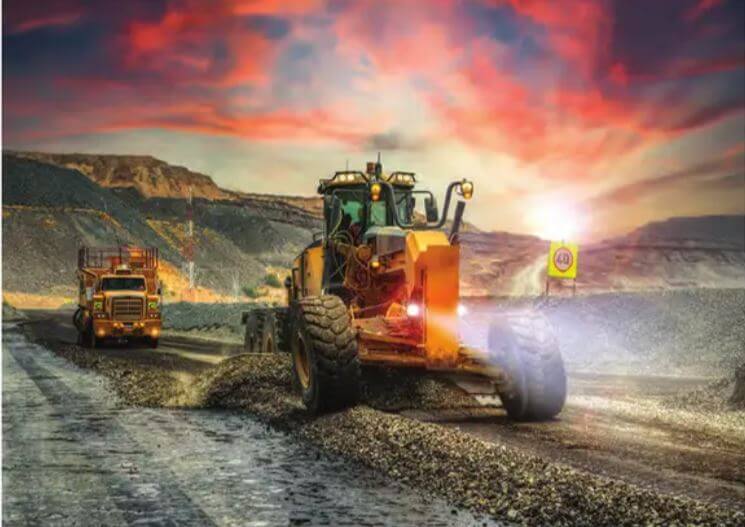Grading Contractors’ Secret To Making A Profit
August 4, 2022
 The popularity of lump sum bidding provides cost assurance for the developer but puts the financial risk on the general and grading contractor. To ensure profitability on earthwork jobs, these contractors rely on their estimators to accurately calculate quantities and provide validation to prove their numbers and get paid.
The popularity of lump sum bidding provides cost assurance for the developer but puts the financial risk on the general and grading contractor. To ensure profitability on earthwork jobs, these contractors rely on their estimators to accurately calculate quantities and provide validation to prove their numbers and get paid.
ACCURACY REDUCES RISK
Successful estimators must understand how to read data from the plans and how demolition, stripping of topsoil, or removing contaminated material affects site quantities. They also need to adjust the proposed grades to subgrade and quantify the cuts. The fills need to be itemized by structural and non-structural regions to determine if any or all the cuts can be reused. This will determine if the design is balanced or requires expensive import or export of material. In some projects, foundation over digs and phased construction complicates the takeoff even further.
The difference between an estimate with accurate quantities or miscalculations directly impacts both winning bids and how much profit is made on the job.
TECHNOLOGY SAVES TIME
Estimators with the skills to manage site data are highly compensated employees. Grading contractors who invest in earthwork software can maximize the estimator’s labor to bid on bigger and more profitable jobs. When contractors realize a savings of five times or more, there is no looking back.
Of course, technology is constantly evolving. While older grading takeoff systems that traced a PDF on screen or used paper plans on a digitizer provided an advantage when first developed, modern systems that do takeoff from CAD and Vector PDF files save considerably more time and provide better accuracy and validation.
VALIDATION PROVIDES CONFIDENCE
While timesaving alone is a great justification for earthwork software, contractors quickly realize another big return on the investment is the ability to better validate data. In a competitive market, this confidence in the numbers allows more aggressive bidding to win more jobs.
For example, when using an earthwork takeoff solution like InSite Elevation Pro, each takeoff item is immediately highlighted across all aligned PDF and CAD files to ensure all items are accounted for. Alternate displays of 3D’s, cross-sections, and cut and fill maps assure the data has been entered correctly and the quantities are correct.
NEGOTIATE WITH HARD EVIDENCE
The same validation that allows competitive bidding also becomes a demonstration of competence. It’s
common for a detailed site takeoff to reveal that the original design yardages are not correct. As designed, a “balanced” site with no expectation of expensive hauloff or import of fill may show a completely different result when calculated under the microscope of someone required to put a dollar sign on the job.
When a takeoff is done manually, the task of making the numbers believable to the design engineer is difficult.
When using a modern software solution, exporting PDFs or DWGs with the marked-up original plans overlaid with the takeoff showing exactly how the numbers were calculated is irrefutable proof that resolves any disputes over quantity during and after the bidding process. These electronic documents also provide quick communication to resolve disputes and improve outcomes. Options to recontour the design grades and communicate the changes with the design team can result in money-saving ideas and demonstrates the competence of the contractor.
SITE COMMUNICATION IS KEY
Cell phones and tablets have the ability to hold the entire documentation of a project, and GPS-enabled apps now allow positioning for site walk-throughs that show the cut and fill and plan data at any location. This proof becomes even more critical as GPS machine control minimizes or eliminates stakes on the job. While no substitute for survey-grade GPS or total stations, the ability to easily communicate site data to the team on their personal devices is a competitive advantage. Problems on the site can easily be marked up and sent back to the office for immediate clarification, which keeps production moving on schedule.
AFTER THE JOB IS WON
After the quantities are calculated, the task of planning the production is the next step. The same earthwork software tools that provide bidding quantities can be used to calculate haul distances, determine slopes, and stockpile locations.
Additionally, GPS Machine Control has become a tremendous tool for increasing production with less skilled labor. Many contractors outsource the GPS machine control model building. Unfortunately, this process creates an external dependence on a third party that can be expensive and cause delays. A takeoff produced with vector data from a CAD or PDF file using software based on triangulation can be modeled carefully and exported to GPS machine control ensuring deadlines are met.
GET PAID
Importing existing topography from GPS or drone survey data to confirm the existing grades on the original bid documents are correct is a good first step. Use the same technology to create graphical proof for progress calculations and scheduled payments.
CLOSING THOUGHT
Well-designed earthwork takeoff software is a competitive advantage that allows your staff to be as productive as possible. When looking for earthwork takeoff software, pick a company that provides easily accessible training and immediate technical support. Bidding is a time sensitive process, and answers can’t wait. Finally, look for a technology partner who is committed to improvement.
This article was published in the July 2022 issue of Modern Contractor Solutions Magazine.